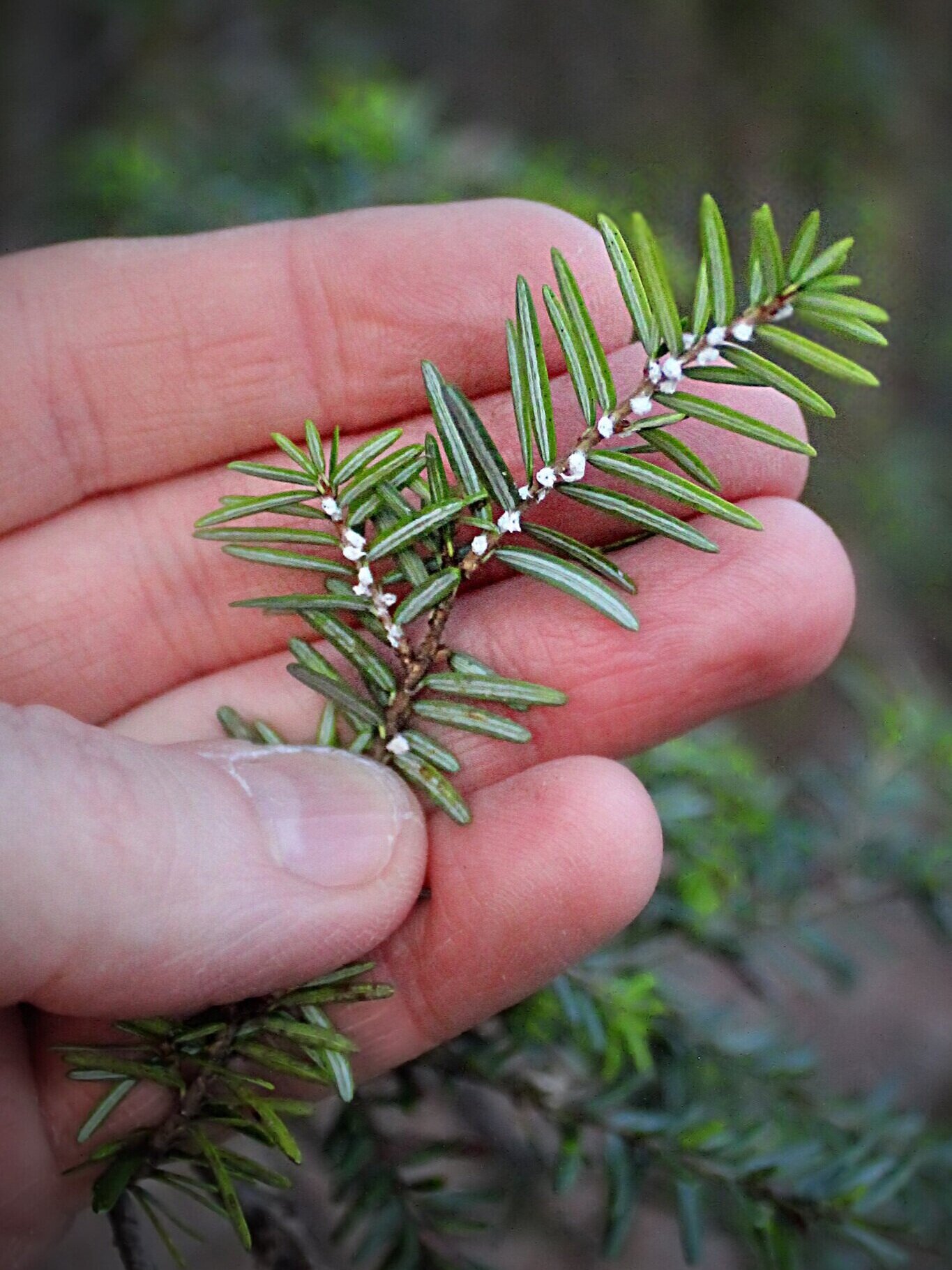
Invasive Species Management
What invasive species are in Sandy Mush forests?
Invasive species in Sandy Mush include plants and insects that are nonnative and have the potential to cause serious harm on its invaded habitat. These invasives inhibit regeneration and growth of native trees and plants, adversely affecting the overall forest health. Invasive species enter forest systems in many different ways both globally (e.g. in shipping) and locally (e.g. bringing firewood from one side of the forest to another). The forests in Sandy Mush have experienced an increase of invasives, namely invasive plants, in the last century due to rich soil types, opening of forested areas from timber harvesting, development of agricultural lands, and other influences that have increased the vectors for species invasion.
Insects
Invasive insects have the potential to wipe out entire stands of one tree species given the opportunity.
Common invasive insects in the Southern Appalachians include Hemlock Woolly Adelgid and the Emerald Ash Borer.
Managing invasives on your property
Resources
MountainTrue’s “Smart Plant Buyer” Guide (PDF)
Who can I contact for help?
Watch: Invasive plants in cove forests webinar
Some questions we answer in this video:
What can I do if my property is overrun with invasives?
How do I identify invasives?
Are the treatments the same for every species?
What tools do I need?
When should I treat invasives?
Looking for more?
Fire Adapted Communities
Ecologically appropriate fire is important to forest health as it can promote native fire dependent species such as shortleaf pine, and limit the number of catastrophic wildfire events by reducing fuel loading. Additionally, ensuring preparedness for wildfire events is important for community resilience.
Wildlife Habitat
As a part of one of the most diverse ecoregions in North America, the forests in the greater Sandy Mush watershed are home to various wildlife groups such as neotropical migrant birds, large mammals, and the largest number of terrestrial snail species in the United States.
Ecological Timber Management
Sustainable forestry via timber harvesting is a way for family forest landowners in Sandy Mush to generate revenue and ensure healthy forest structure. Some forests in the region have been harvested using unsustainable practices and require some degree of forest restoration to promote their development into high value timber stands.




